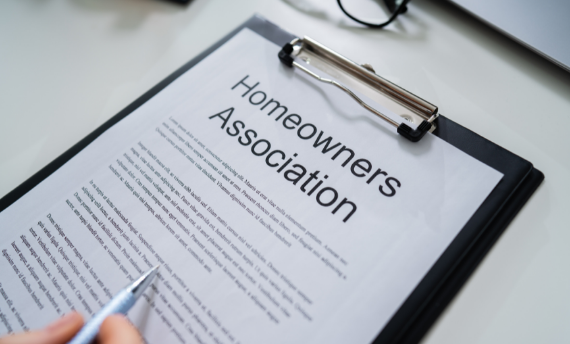It’s not uncommon to find multiple associations linked to your property in Florida, California, Texas, and many other states. So, it’s critical to know about all the associations governing your property and stay on top of all community by-laws and fees to prevent legal issues such as fines, liens, and foreclosures.
Many common interest developments such as planned residential properties, condominiums, and co-ops use Covenants, Conditions, & Restrictions (CC&R) to regulate the use, maintenance, and appearance. The CC&R provides the legal description of your property subject to the association. Therefore, it could give you a clue about other associations linked to the property. Additionally, you could request an estoppel document from the association.
This blog looks at how to find out if several associations govern your home and the effects they have on your property.
What are Associations?
Association-managed communities offer numerous benefits such as board-enforced rules, community upkeep, an active voice from community members, and improved value for resale. However, associations also come with monthly upkeep fees, restrictions, and other fees (capital contributions, special assessments, and hidden fees).
As a member of a planned community with an HOA or Condominium Owners Associations (COAs), you need to know your community by-laws and pay your fees on time to prevent legal issues such as liens. It’s also critical to do your real estate due diligence and track down all the relevant information you need about your HOA.
What is an HOA/COA?
A homeowner’s association governs a planned community, subdivision, or condominium complex (COA) responsible for making and enforcing rules for the properties and residents. Purchasing property within an HOA or COA jurisdiction automatically makes you a member bound by the by-laws and dues or maintenance fees.
The HOA regulations are in place to better the community, maintain the common areas, and ensure uniformity in the styles, landscaping, curb appeal, and more to increase property value. An association’s governing body includes a board of directors (BOD) comprised of a president, treasurer, secretary, and other appointed positions the community needs.
The first community associations appeared in the 1960s and have grown considerably across the US. Today, they represent over 50% of American homeowners, with a 1.3% growth projection over the next year.
Different Levels of Associations Managing Properties
Associations exist in multiple levels comprising master associations at the top managing multiple sub-associations, each with a board of directors (BOD). Sometimes, the sub-associations operate entirely independently of the master association. In these cases, it’s challenging to track down all associations governing your property for estoppel.
The evolution of Florida’s planned development communities is complex but fascinating. Today, massive communities with extravagant amenities and numerous planned phases often have overlapping associations governing them. These include communities with:
- Multi-condominium associations
- A combination of townhomes, condominiums, and single-family HOAs
- Mixed-use condominiums
However, nearly all Florida planned communities have a governing master association.
The multiple associations governing housing developments often have overlapping authority and duties, with ultimate control delegated to master associations. Unfortunately, with some lower-level associations operating almost independently, it’s easy for homeowners to fail to know all the associations governing their property.
Additionally, master associations declarations are often unclear concerning the type of association and which Florida Statutes control them. These associations are almost always established as non-profit entities under Chapter 617, Florida Statutes. However, sometimes these master associations may also be:
- HOAs under Chapter 720, Florida Statutes or Homeowner’s Association Act or,
- Condominium associations under Chapter 718, Florida Statutes or the Condominium Act
The distinction drastically affects the governing laws, association’s authority, and member rights. For example:
- Suppose a master association governs single-family lots and condominium units, but the latter have their governing condominium sub-association. In that case, the master association is not responsible for the condominiums and falls under the Homeowners Association Act, making it an HOA or simply a non-profit corporation.
- However, suppose a master association governs condominium units only and is entirely owned and operated by condominium unit owners, then it falls under the Condominium Act.
How to Find Out if Your Home Is in Multiple Associations
There are two main ways of finding out if your property falls under multiple associations. Through your real estate agent and title agent or by conducting the search yourself, though your title agent is going to be the most well versed in retrieving this information. They often turn to specialized teams at a third-party service provider to dig deeper.
Through Your Realtor or Title Agent
When buying a home or condominium, the best way to know if a potential property falls under multiple associations is through requesting estoppel.
Real estate transactions have two types of estoppel: association and tenant. For our purposes, we will discuss the former. Association estoppel is a legal document you obtain from your property’s governing common interest community, such as an HOA or COA. It shows all the property’s outstanding fines and fees due on a specified date.
Every US state has requirements and guidelines regulating how associations share information with future owners and residents regarding their by-laws, assessments, fees, fines, and other essential information.
Therefore an estoppel letter serves as a legally binding document listing dues, fees, and assessments you are responsible for after assuming property ownership under an HOA or COA. There are statutes stopping associations from adding more fees after closing. Without the document, you could be responsible for the prior owners’ unpaid fees. It’s especially vital when purchasing property during an HOA auction because it could have shocking hidden costs.
DIY Search
Alternatively, you could do your own search. For example, you could drive straight to your county recorder’s office and retrieve the information you need, which can be frustrating and time-consuming. However, a better alternative is an online search to find community information and the right government agencies keeping HOA information.
Below are two crucial facts you need to know as you start your search:
- The creation of HOAs requires a declaration of CC&Rs, surveys, or plats with the county records, making it a great place to begin your search.
- Non-profit associations fall under the state’s no-profit corporation law. In this case, you will do your search at the state corporation commission.
Once you know where to search, you now need to know how to find the information you need using the following steps:
- Find the name of the property’s community or subdivision by visiting your local county assessor’s website. Then search by the current property owner’s name, address, or parcel ID. You can also find the name of the subdivision or community by asking a neighbor, reviewing the property’s mortgage or deed, and doing an online search for properties for sale in the area.
- Find the association’s name from the county records or state corporation commission.
- Find the association’s contact information.
- Find the association’s recorded documents such as CC&R, amendments, by-laws, notices, plats, liens, surveys, and judgments.
- Verify you have the correct information by reviewing things like a plat or subdivision map, the association’s CC&R, or a property deed.
- Find multiple associations linked to the property – usually found as the CC&R exhibit.
- Contact the HOA or COA directly and ask for estoppel.
The Difference between CDD and an HOA/COA
An HOA governs a housing community, complex, or development in which you buy your home. Membership is mandatory, and HOA fees are paid separately from your mortgage under a schedule set by the association. The regular fee covers several things, including maintenance and repairs, insurance, landscaping, water, cable, and trash pick-up.
A community development District (CDD) is slightly different from an HOA. It’s a community entity that assesses fees for infrastructure and amenities. Unlike HOA fees, its fees are included in your annual property tax bill, meaning you pay them together with your mortgage. CDD fees can cover:
- Infrastructures like sidewalks or roads
- Community amenities like parks and pools
- Sewer and water
- General maintenance
Although polarizing, community associations like COAs and HOAs offer unique benefits to help maintain communal areas and property values. However, they can have numerous hidden fees that you must pay or face property liens. Therefore, it’s essential to know all the facts before closing on a home by ordering a resale certificate or estoppel to find out if it has multiple governing associations.









